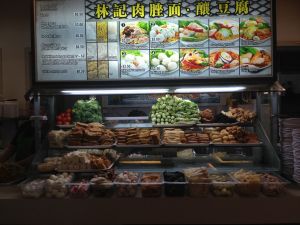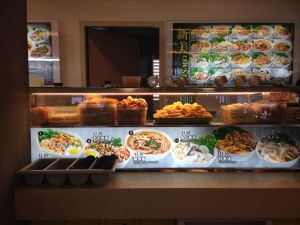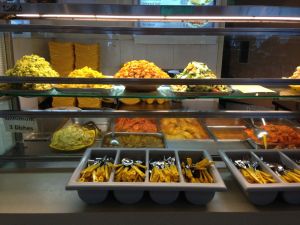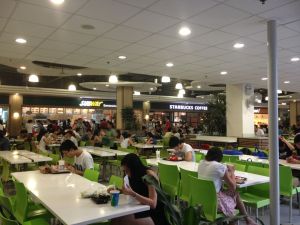At this time of the year people send Christmas cards and wishes for the upcoming year. Some even summarize in shorter and longer reports what they and their family had been up to during the year. These types of letters have however become very infrequent during the past years, probably because all information is anyway available on the respective FB pages or on personal blogs. Thus no need to summarize what has been going on.
Still, I think to sum up provides an opportunity to mentally scan the months since January 2014 and to realize how fast this year has actually passed and how much has happened.
January started off with the Nordic winter meeting in Lund, where Linda Löwhagen presented her very first poster and a heavy cold prevented me from giving a scheduled talk. A short trip to Hong Kong and Singapore and visits to four different universities opened my eyes as to how dynamic Asian universities are and how important it is to create links with these universities. Back in Stockholm I submitted an application for a sabbatical in Asia. This was granted and allows me to spend most of next year at Chulalongkorn University in Bangkok and Nanyang Technical University in Singapore.
February continued pretty much with an Asian theme. Kruawan Jankaew from Chulalongkorn University, who is co-advisor for my student Linda Löwhagen, visited to help Linda with her tsunami work; Paul Krusic and I organized a Bolin Centre workshop on the Asian monsoon with invited guests Jessica Tierney and Kevin Anchukaites from Woods Hole; my students Akkaneewut (Nut) Chabangborn, Sakonvan (Moo) Chawchai, Francesco Muschitiello and I visited Queen’s University in Belfast and GAP (invitation by Maarten Blaauw) to see the 14C lab, where all our samples were dated, and to present the Thailand monsoon project.
March and April were busy months: reading and commenting on student manuscripts, seminars, evening course and administration, and preparing posters and talks for the upcoming EGU meeting in Vienna, where we were present with five posters and one oral presentation, and enjoyed the lecture by Sheri Fritz (this year’s Hans Oeschger medalist). I also travelled to Rennes in France to be part of the committee for Rémi David’s PhD defense. This gave me a nice opportunity to connect again with archaeologists (and old friends) and to learn more about archaeology and past vegetation changes in the Paris Basin and the Armorican Massive.
As during the past six years, May was again one of my excursion months, with two weeks in Les Eyzies in the Dordogne. Also in May, my student Francesco Muschitiello successfully defended his licentiate thesis. In June we welcomed Nicki Whitehouse for two weeks so that we could work on a manuscript that had been in the Dropbox drawers for quite some time. It is still not ready, but hopefully will be soon.
July and August are generally the quietest months of the year, since everyone is on holidays, enjoying the Swedish summer, which again was beautiful, warm and gave us loads of sunshine. I tried to write up all the data we have so far for our Thailand lake Kumphawapi – the manuscript is ready, or almost ready, but still needs a thorough revision to also incorporate our new biomarker data sets.
September was again busy, with another week in Les Eyzies (the very last one), teaching two courses and excursions with students to Gotland. As a response to our article “Synchronous records of pCO2 and Δ14C suggest rapid, ocean-derived pCO2 fluctuations at the onset of Younger Dryas” (Steinthorsdottir et al. 2014, Quaternary Science Reviews 99, 84-96), Köhler et al. (who had obviously been one of the reviewers) submitted a several pages long comment questioning our results. It is great that our article got attention (may increase the citations), and hopefully it also opens the eyes of ice core and marine scientists for the potentials of stomata-derived carbon dioxide reconstructions. Margret Steinthorsdottir wrote an excellent reply, which was published recently together with Köhler et al.’s comments in Quaternary Science Reviews.
October was absolutely the busiest month this year: teaching, visits and two PhD defences! This year’s October will stay in my memory for a long time, because my two (former) PhD students Akkaneewut (Nut) Chabangborn and Sakonvan (Moo) Chawchai managed elegantly to defend their respective PhD theses. Both started in spring 2010 and worked very hard during these four years in the lab, in the field and writing up their results, alongside with English lessons. They had a bumpy road, but they took all the challenges and succeeded! Nut’s opponent Karen Kohfeld from Simon Fraser University stayed for two weeks, which made it possible to explore joint future projects, and gave Karen an opportunity to attend three Swedish PhD theses. October’s other highlight was that Tanja Slotte, Laura Parducci and I got a proposal approved by the Science Faculty of Stockholm University for a pilot project and a two-year postdoc to study ancient DNA in lake sediments.
November and December saw me finally in the lab: sampling sediment sequences, sieving samples, checking 560 samples for macrofossils and selecting suitable samples for radiocarbon dating. It has been a long time since I had time for such a luxury! My lab work was only interrupted by a short visit to Bergen University, where I acted as opponent for a PhD defense, and by the visits of Pascale Braconnot (Université de Nantes) and Oli Pryce (CNRS) who talked about the Asian monsoon and PMIP models, and archaeology in Thailand, respectively.
What’s up for next year then? Foremost my sabbatical months at Chulalongkorn University and Nanyang Technical University, proposal writing, the hope to being able to finally finish up old manuscripts and to write new ones, and the start of our metagenomics pilot project! Fingers crossed!
















































































































































































































































































































































